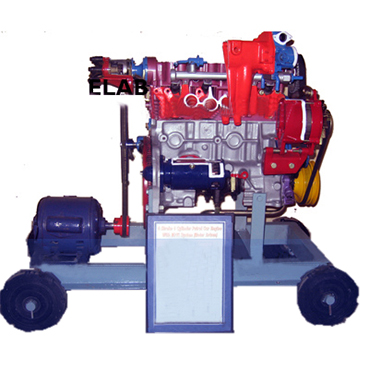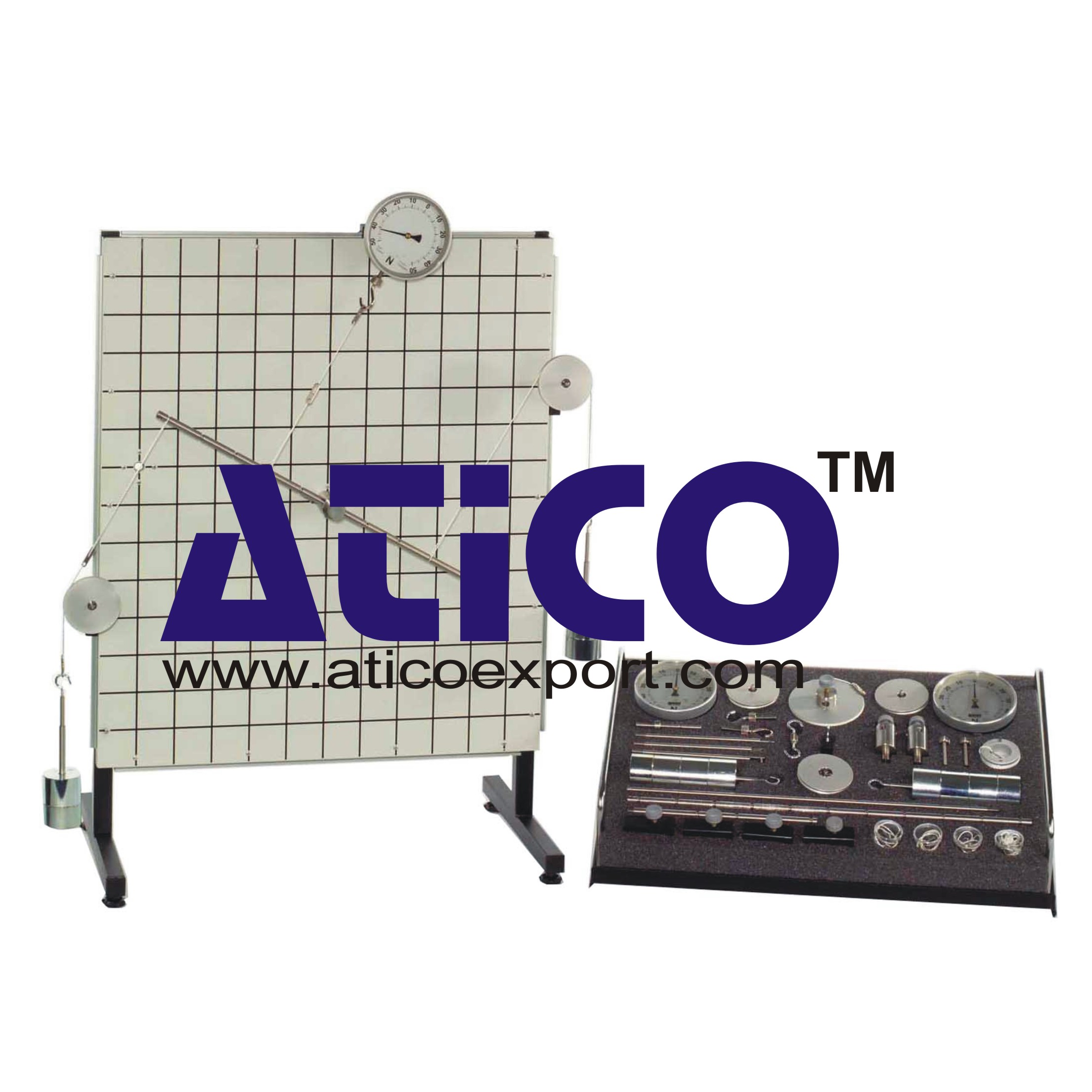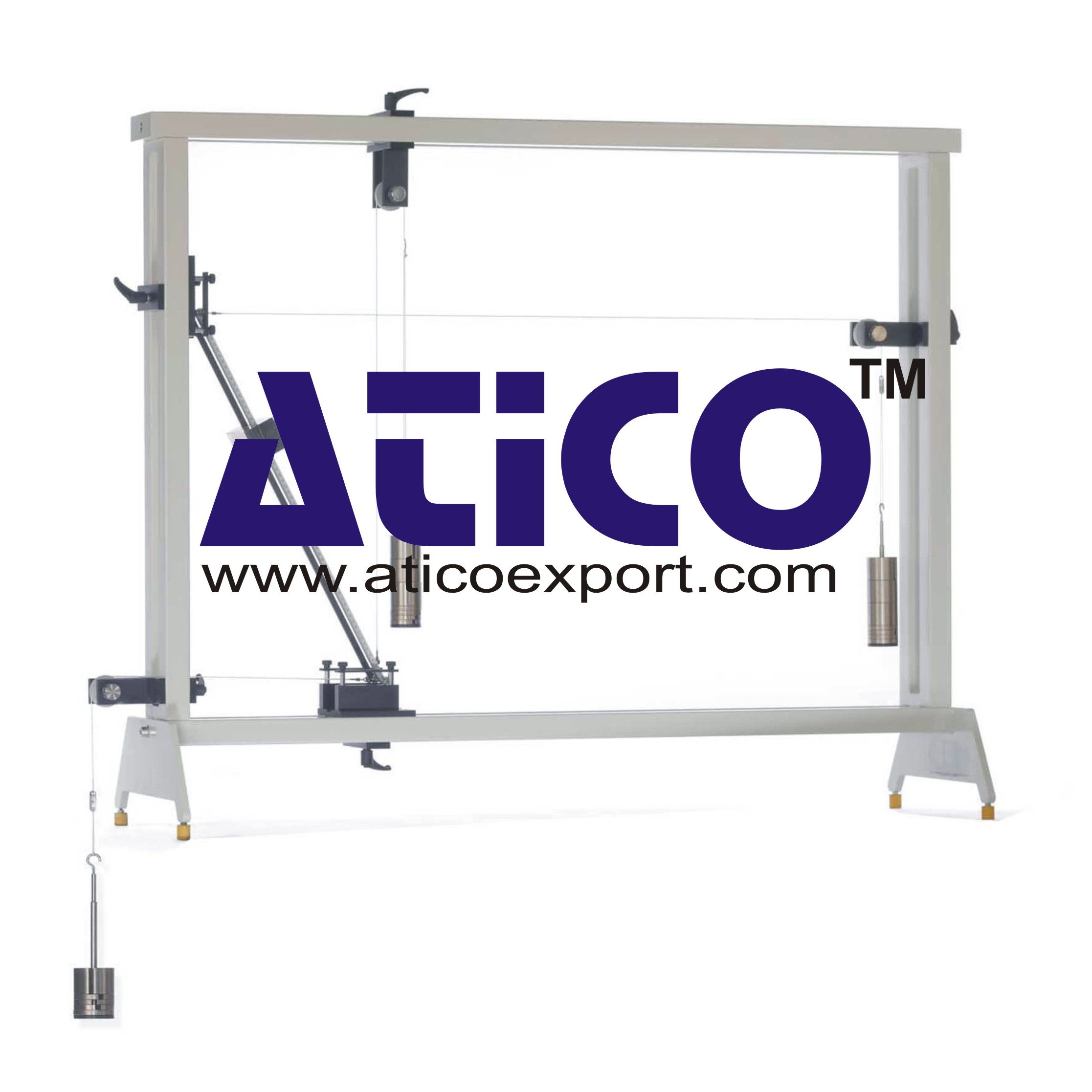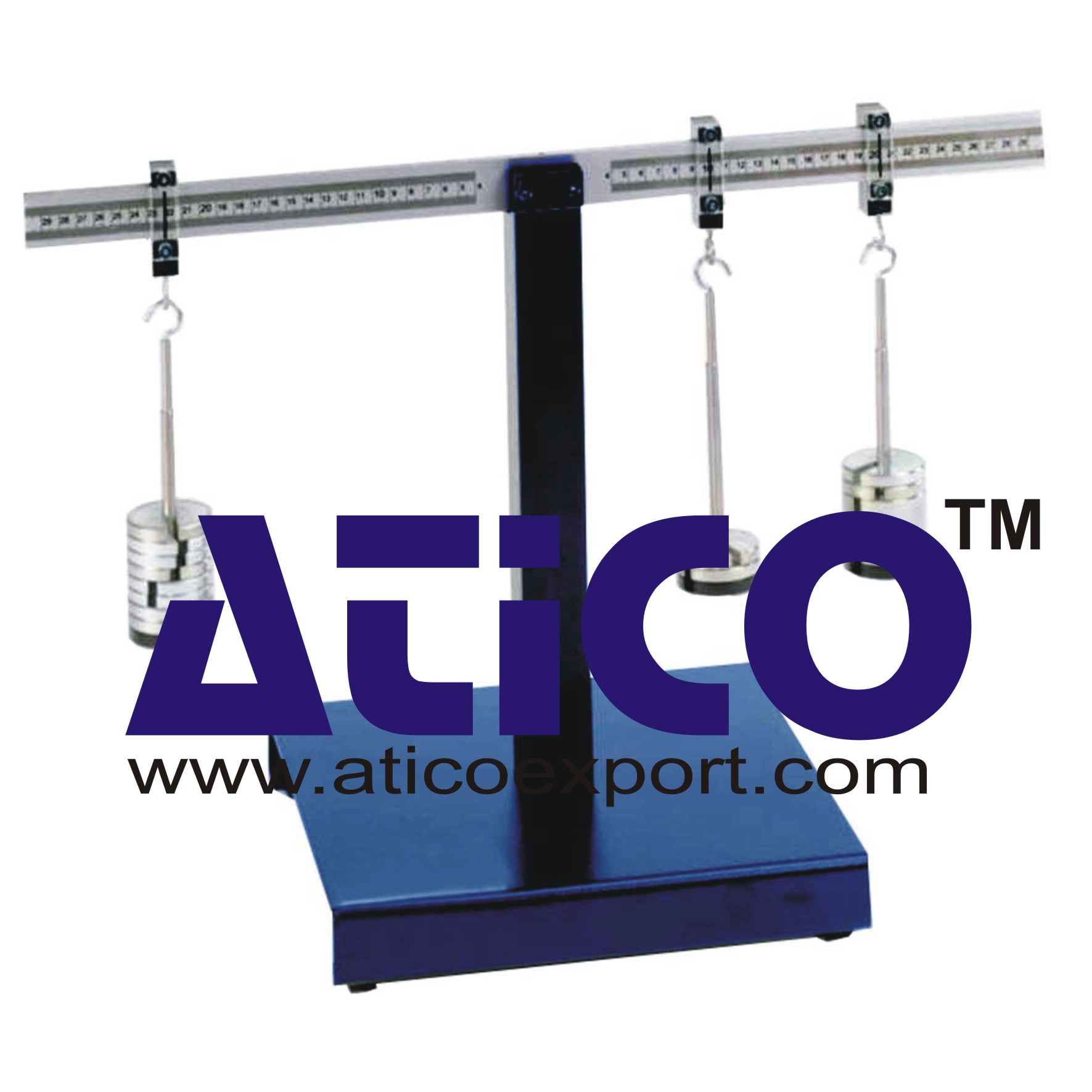Francis Turbine Trainer
Categories: Engineering Lab EquipmentThe Francis turbine belongs to the reaction turbines which convert pressure energy of the working medium into kinetic energy in the guide vanes and in the rotor. Francis turbines are used for medium h...
Product
Description
The Francis turbine belongs to the reaction turbines which convert pressure energy of the working medium into kinetic energy in the guide vanes and in the rotor. Francis turbines are used for medium heads. The turbine power is controlled by adjusting the guide vanes. In practice, Francis turbines are used in run-of-river power plants and in pumped storage plants.
It enables examinations of the function and operating behaviour of a Francis turbine. The dimensions of the trainer guarantee realistic measured values. The closed water circuit consists of a tank with optional cooling, a centrifugal pump and a flow control valve for adjusting the inlet pressure. The transparent operating area of the turbine enables an optimal view of water flow, rotor and guide vanes during operation. By adjusting the guide vanes the angle of attack, the cross-section and thus the output of the turbine are changed. An asynchronous machine is used as a generator for loading the turbine. A pump with variable speed via frequency converter provides for an energy efficient operation.
Learning Objectives/Experiments
Investigation of the conversion of hydraulic into mechanical energy
Determination of the mechanical power and hydraulic power of the turbine
Determination of efficiency
Recording of characteristic curves
Investigation of the influence of the guide vane position
Velocity triangles
Specification
Investigation of a Francis turbine
Closed water circuit with pump, motor, flow control valve and tank with optional cooling
Pump with variable speed via frequency converter
Adjustment of flow rate via flow control valve
Loading the turbine by use of the asynchronous machine as generator
Rotor and guide vanes of the turbine completely visible
Adjustable guide vanes for setting different angles of attack
Non-contact speed measurement at the generator haft and force sensor for measuring the driving torque
Digital display for temperature, flow rate and ressures (additional manometer within scope of supply), speed, torque and electrical power of generator
Technical data
Francis turbine
hydraulic power: 2,1kW at 1500min-1
mechanical power: approx. 1,4kW at 1500min-1
rotor, D: 120mm, 15 blades
10 guide vanes, angle of attack adjustable: 0…23°
Centrifugal pump, multistage
variable speed
power consumption: 5,5kW
max. flow rate 900L/min
pump head 42m
Asynchronous machine as generator
output: 2,2kW at 1440min-1
Tank: 550L
Measuring ranges
temperature:: 0…100°C
pressure (inlet): ±1bar (turbine)
pressure (outlet): 0…6bar (turbine)
flow rate: 0…1000L/min
torque: 0…20Nm
speed: 0…3000min-1
power: 0…2200W (generator)
400V, 50Hz, 3 phases
400V, 60Hz, 3 phases, 230V, 60Hz, 3 phases
quick overview :
The Francis turbine belongs to the reaction turbines which convert pressure energy of the working medium into kinetic energy in the guide vanes and in the rotor. Francis turbines are used for medium heads. The turbine power is controlled by adjusting the guide vanes. In practice, Francis turbines are used in run-of-river power plants and in pumped storage plants.
It enables examinations of the function and operating behaviour of a Francis turbine. The dimensions of the trainer guarantee realistic measured values. The closed water circuit consists of a tank with optional cooling, a centrifugal pump and a flow control valve for adjusting the inlet pressure. The transparent operating area of the turbine enables an optimal view of water flow, rotor and guide vanes during operation. By adjusting the guide vanes the angle of attack, the cross-section and thus the output of the turbine are changed. An asynchronous machine is used as a generator for loading the turbine. A pump with variable speed via frequency converter provides for an energy efficient operation.
Learning Objectives/Experiments
Investigation of the conversion of hydraulic into mechanical energy
Determination of the mechanical power and hydraulic power of the turbine
Determination of efficiency
Recording of characteristic curves
Investigation of the influence of the guide vane position
Velocity triangles
Specification
Investigation of a Francis turbine
Closed water circuit with pump, motor, flow control valve and tank with optional cooling
Pump with variable speed via frequency converter
Adjustment of flow rate via flow control valve
Loading the turbine by use of the asynchronous machine as generator
Rotor and guide vanes of the turbine completely visible
Adjustable guide vanes for setting different angles of attack
Non-contact speed measurement at the generator haft and force sensor for measuring the driving torque
Digital display for temperature, flow rate and ressures (additional manometer within scope of supply), speed, torque and electrical power of generator
Technical data
Francis turbine
hydraulic power: 2,1kW at 1500min-1
mechanical power: approx. 1,4kW at 1500min-1
rotor, D: 120mm, 15 blades
10 guide vanes, angle of attack adjustable: 0…23°
Centrifugal pump, multistage
variable speed
power consumption: 5,5kW
max. flow rate 900L/min
pump head 42m
Asynchronous machine as generator
output: 2,2kW at 1440min-1
Tank: 550L
Measuring ranges
temperature:: 0…100°C
pressure (inlet): ±1bar (turbine)
pressure (outlet): 0…6bar (turbine)
flow rate: 0…1000L/min
torque: 0…20Nm
speed: 0…3000min-1
power: 0…2200W (generator)
400V, 50Hz, 3 phases
400V, 60Hz, 3 phases, 230V, 60Hz, 3 phases
Product
Reviews
add Review
reviews
No Review Yet.
Copyrights © 2025 All Rights Reserved by Atico














Product
Reviews
add Review
reviews
No Review Yet.